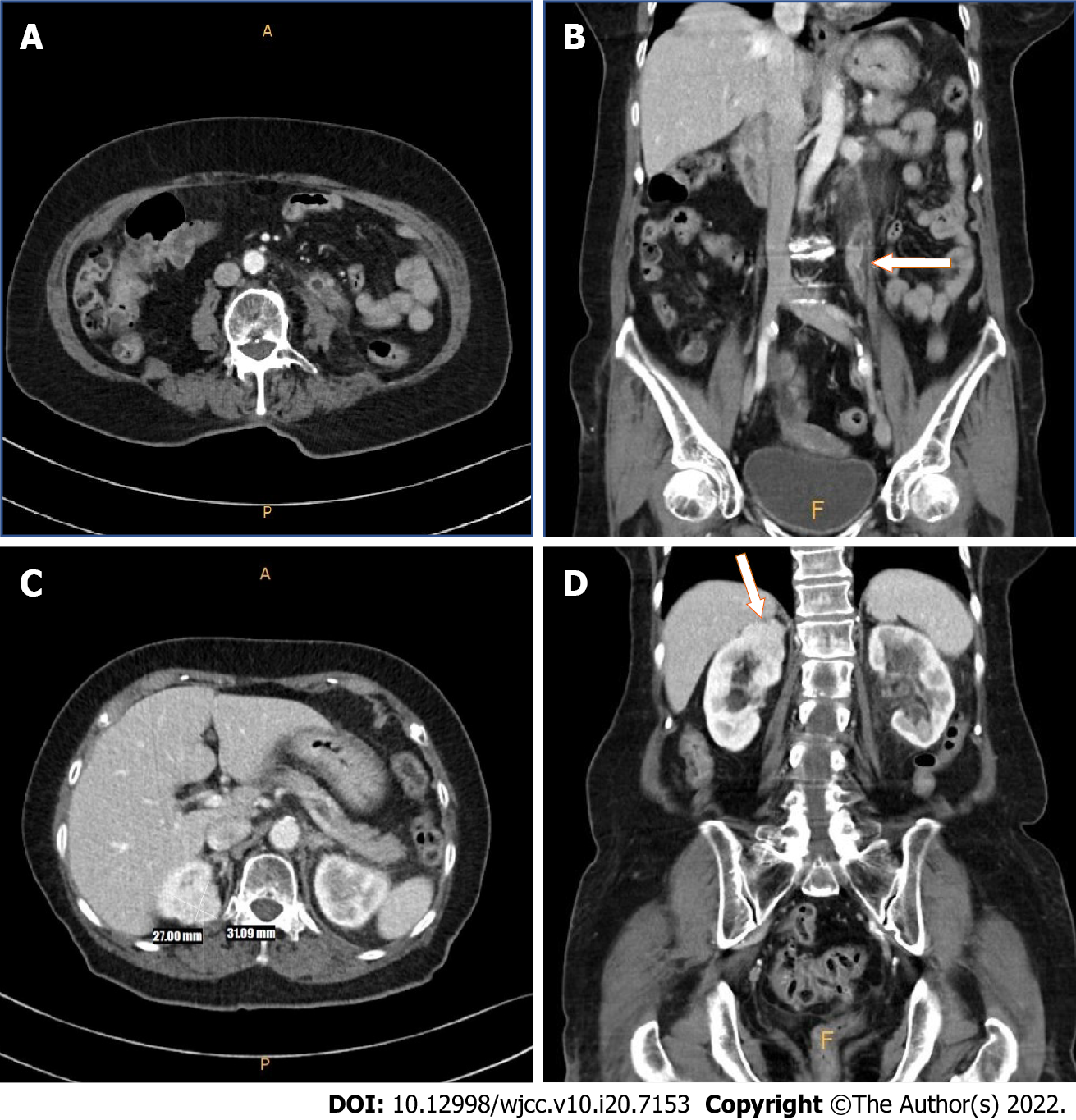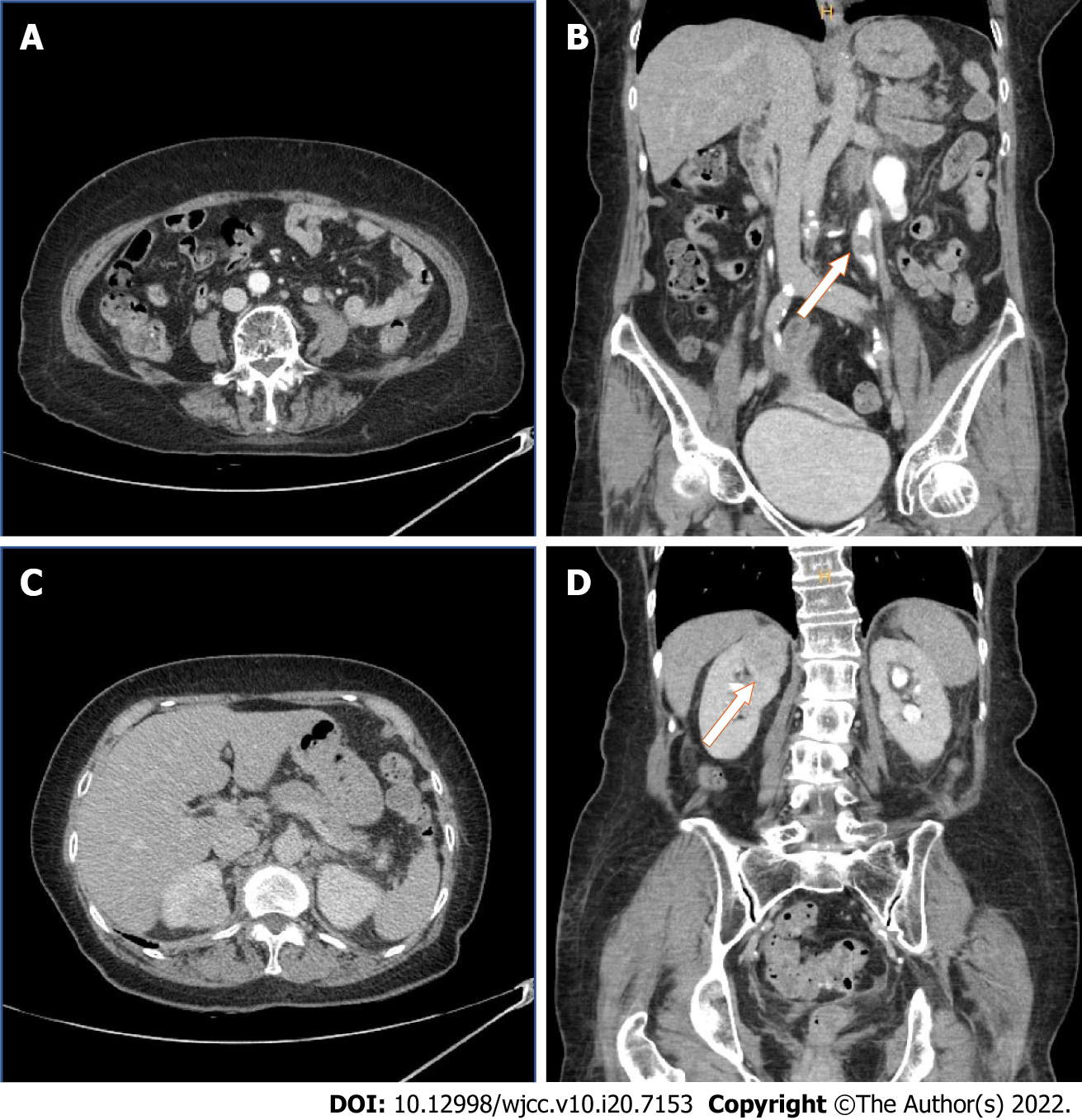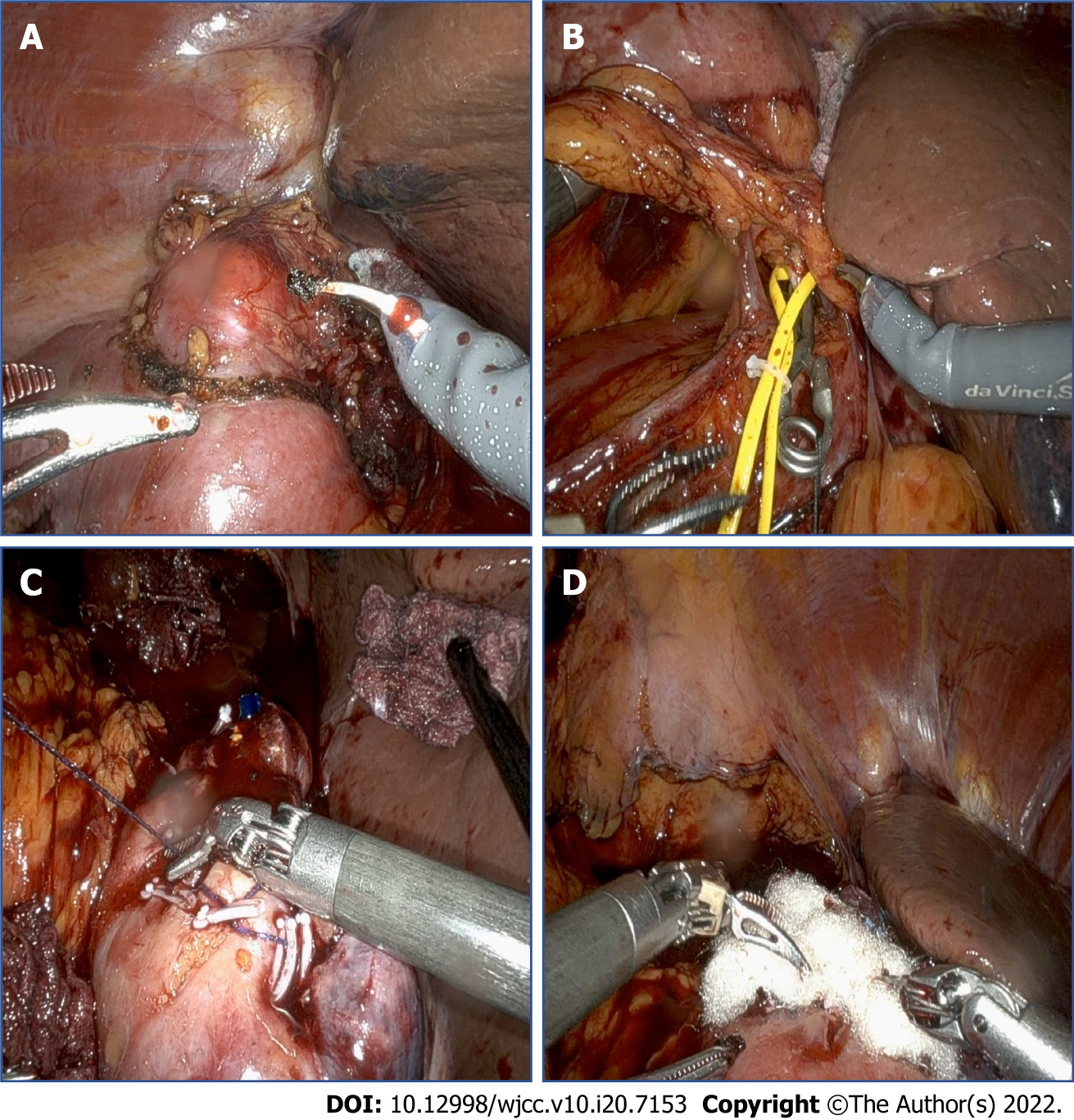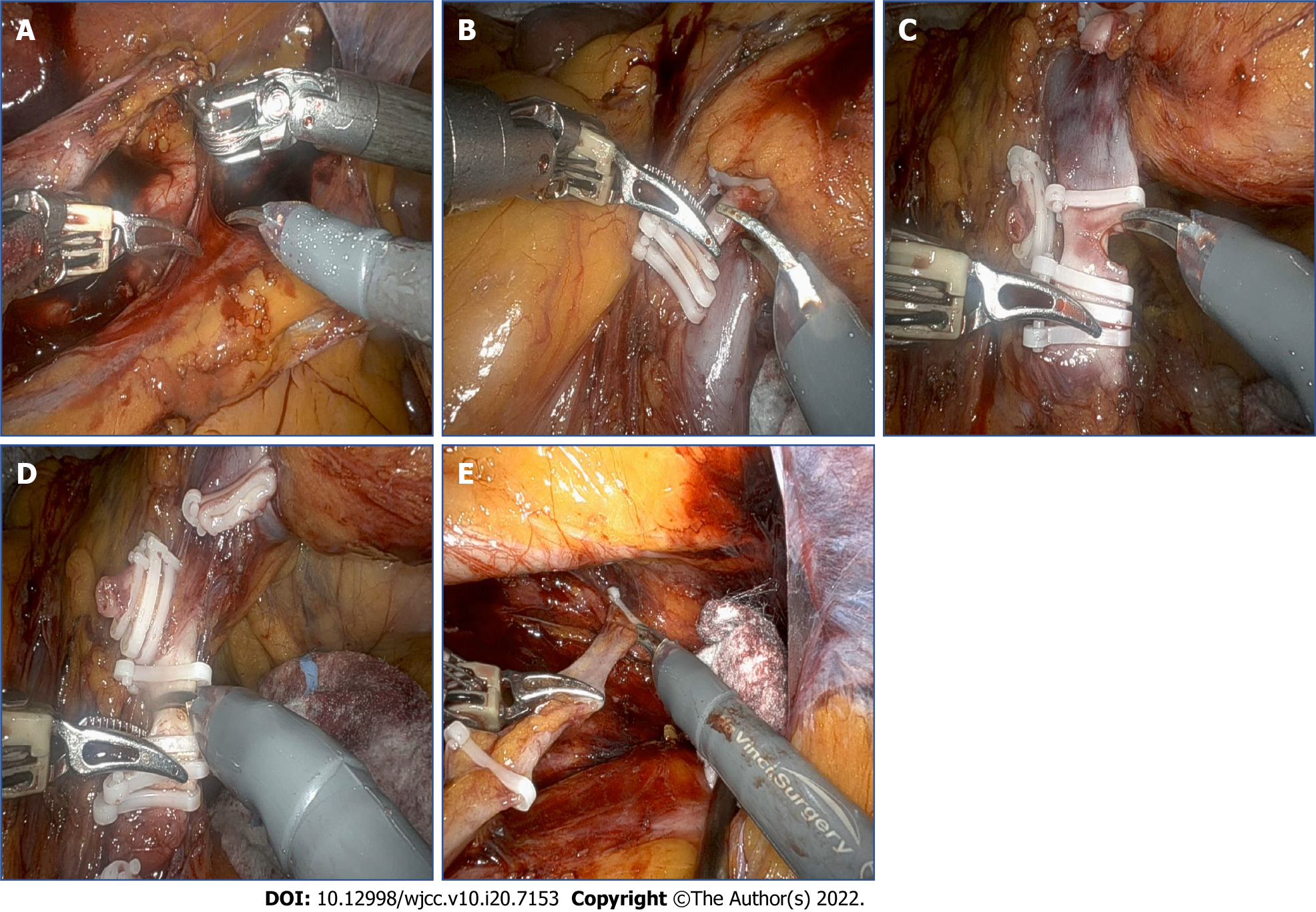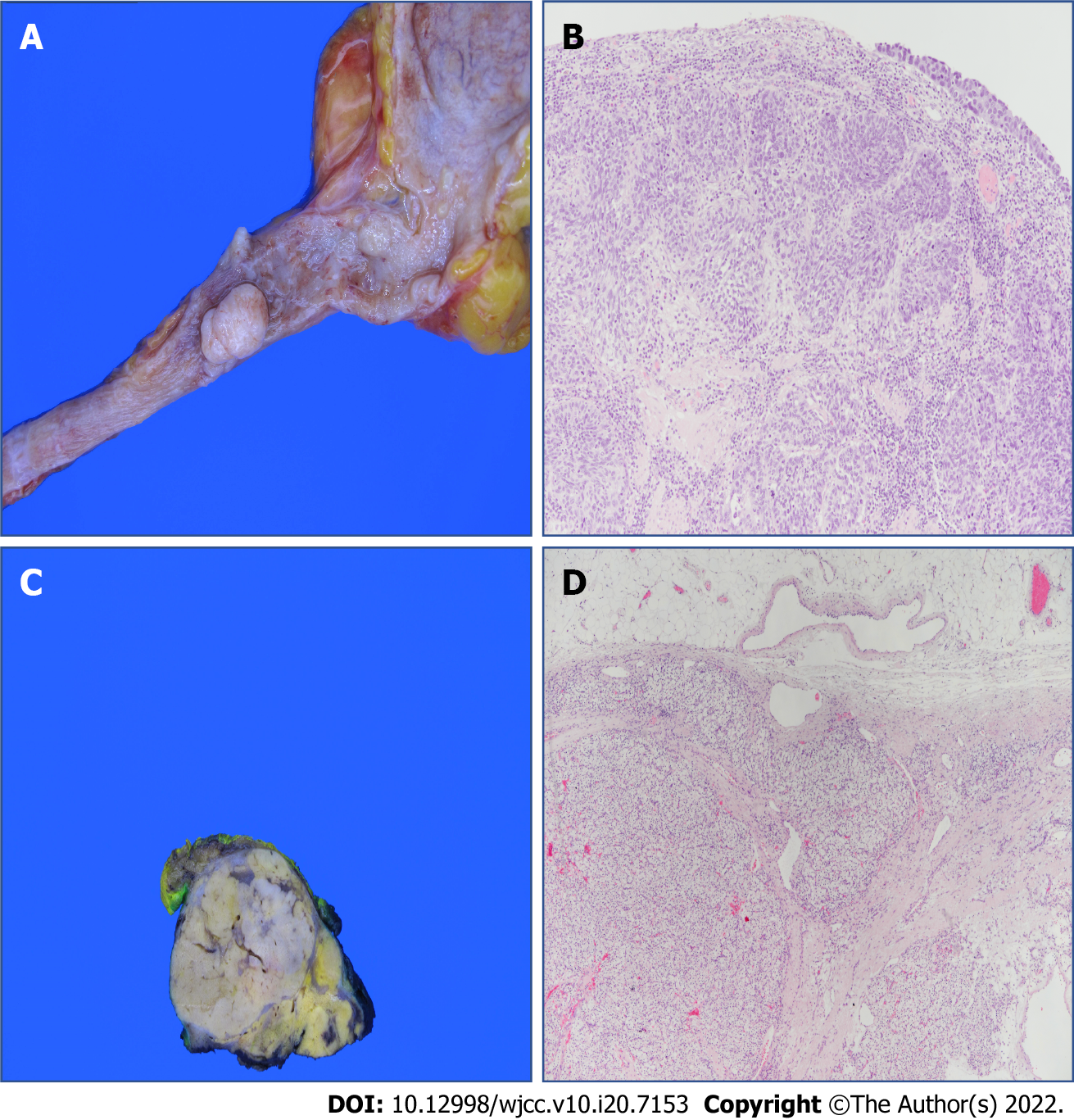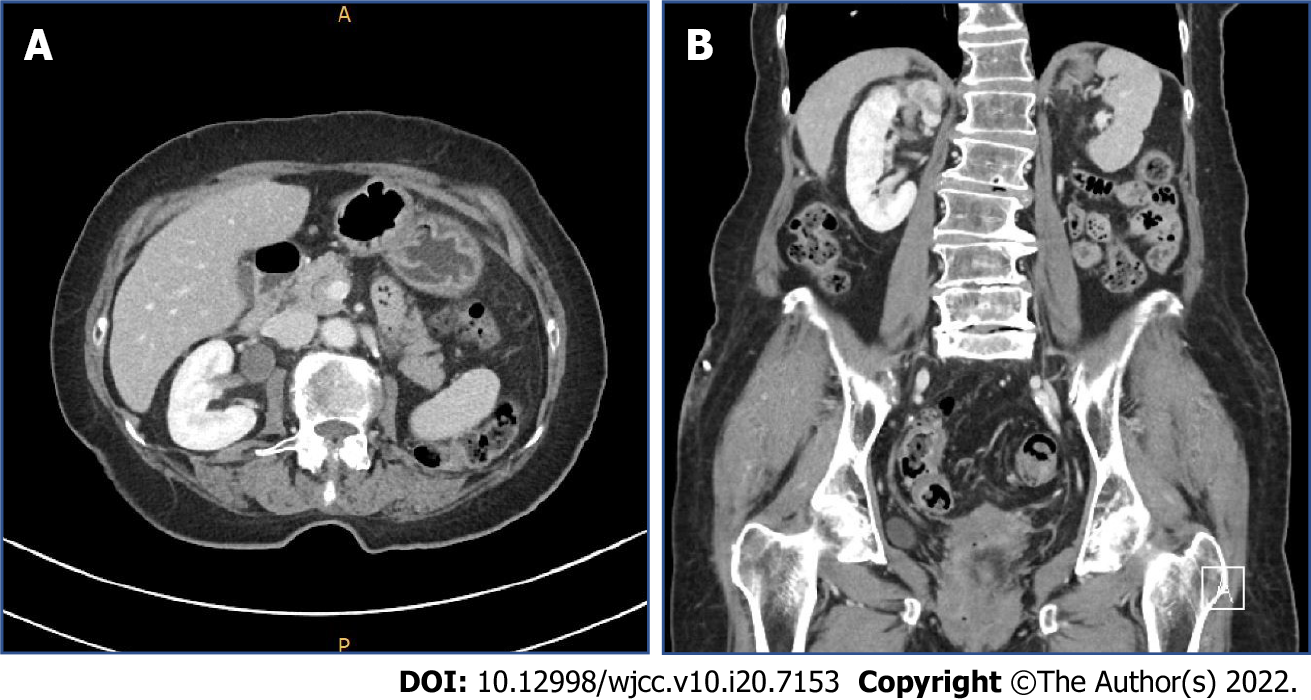Copyright
©The Author(s) 2022.
World J Clin Cases. Jul 16, 2022; 10(20): 7153-7162
Published online Jul 16, 2022. doi: 10.12998/wjcc.v10.i20.7153
Published online Jul 16, 2022. doi: 10.12998/wjcc.v10.i20.7153
Figure 1 Computed tomography.
Pre-operative computed tomography showed proximal segmental enhancing mass with eccentric left ureteral wall thickness. suggestive of urothelial tumor. A: Axial; B: Coronal. In the upper pole of the right kidney, a 3 cm-sized enhancing mass was identified. Suspected of renal cell carcinoma. No direct invasion was identified; C: Axial; D: Coronal.
Figure 2 After admission, computed tomography urography was performed to obtain exact image of tumor distribution.
A 1.6 cm-sized mass was observed in the left proximal ureter’s distal portion with suspicious periureteral soft tissue invasion. No regional lymph node enlargement was founded. A: Axial; B: Coronal. 3.1 cm-sized lobulation, relatively homogeneous enhancing mass was observed. Intratumoral cyst with focal oval low density area was founded. Most likely renal cell carcinoma.
Figure 3 Robot-assisted right partial nephrectomy.
A: The mass was marked by electrocautery with 2-cm positive margin; B: Selective arterial hilar clamping was applied; C: After mass excision, continuous suture was done with hemo-lock clip; D: Surgicel and fibrillar were applied to prevent bleeding around mass resected site.
Figure 4 Robot-assisted left radical nephroureterectomy.
A: The ureter was identified and dissected cranially; B: After identified renal pedicle, first renal artery was ligated; C: Renal vein were dissected and ligated; D: Secondary renal artery was ligated; E: Dissection around lower ureter and lateral urinary bladder wall was performed with traction.
Figure 5 Pathologic findings.
A: The specimen shows multiple protruding nodular masses in left proximal ureter, measuring 1.7 cm × 1.0 cm in the largest one; B: High-grade urothelial carcinoma in the left proximal ureter, shows invasion to the muscular layer. [hematoxylin-eosin staining (H&E), 100 ×]; C: The cut surface reveals a 3.8 cm × 3.2 cm yellowish, well-demarcated solid tumor in right kidney; D: Renal cell carcinoma of clear cell type with Fuhrman nuclear Grade 3 in right kidney, shows invasion to perinephric tissue (H&E, 40 ×).
Figure 6 Post-operative computed tomography.
No evidence of tumor recurrence at left nephroureterectomy site. Probably postoperative change in right kidney upper aspect. A: Axial; B: Coronal.
- Citation: Yun JK, Kim SH, Kim WB, Kim HK, Lee SW. Simultaneous robot-assisted approach in a super-elderly patient with urothelial carcinoma and synchronous contralateral renal cell carcinoma: A case report. World J Clin Cases 2022; 10(20): 7153-7162
- URL: https://www.wjgnet.com/2307-8960/full/v10/i20/7153.htm
- DOI: https://dx.doi.org/10.12998/wjcc.v10.i20.7153









